The dairy industry is a cornerstone of Vermont’s economy, contributing significantly to employment and producing high-quality dairy products, delivering an economic impact of over $5 billion.
Dairy farms, mostly small and family-owned, generate a substantial portion of the state’s agricultural revenue, with dairy being Vermont’s most valuable agricultural product.
More than a Collar
Animal health tracking devices provide efficient and accurate tracking with tags attached to a cow’s ear or collar so farmers can monitor individual cow’s health in real time, including:
- GPS Location
- Illness
- Reproductive Cycles
- Labor and Calving
- Lameness
- Rumination
- Mastitis
- Milk Production
Animal health tracking devices reduce the time spent on manual record-keeping by
30–50%
Waste Management
Vermont dairy farms are practicing innovative waste management practices, emphasizing sustainability, and environmental stewardship.
Nutrient Management Plans
Farms are implementing sustainable practices—such as enhanced nutrient management plans, cover cropping, and the establishment of vegetative buffer zones—to reduce the phosphorus and other pollutants entering waterways.
Composting
Farmers are mixing ingorganic materials—such as bedding, uneaten feed, and barn waste—with manure to produce nutrient-rich compost. The compost can enhance soil health on the farm or be sold to local communities for gardening and landscaping.
Soil Injectors
Soil injection is an innovative manure management technique that directly applies liquid manure below the soil surface. This method minimizes nutrient runoff, reduces odors, and ensures efficient nutrient absorption by crops.
Manure Management and
Anaerobic Digesters
Vermont farmers implement advanced strategies to handle, store, and repurpose manure generated on their farms.
Using manure solid-liquid separation contribute to methane reduction by preventing the anaerobic decomposition of organic matter in storage lagoons. This helps cut methane emissions by 20–50%.
In addition, anaerobic digesters are becoming more common at dairy farms. An anaerobic digester is an airtight vessel in which bacteria digest—or decompose—organic waste such as manure. The resulting biogas can be used to generate electricity or sold.
How does an Anaerobic Digestor work?
Cow Power Program
Green Mountain Power Corporation (GMP) offers Vermont farmers a production incentive to generate electricity via anaerobic digestion of cow manure.
Its program, Cow Power, allows farms to recycle cow manure into renewable energy—electricity that is sent back into the grid, powering local homes.
As of 2019, fourteen dairy farms in Vermont participate in GMP’s renewable energy program, providing power for 3,200 Vermont customers who have chosen to opt into the program.



